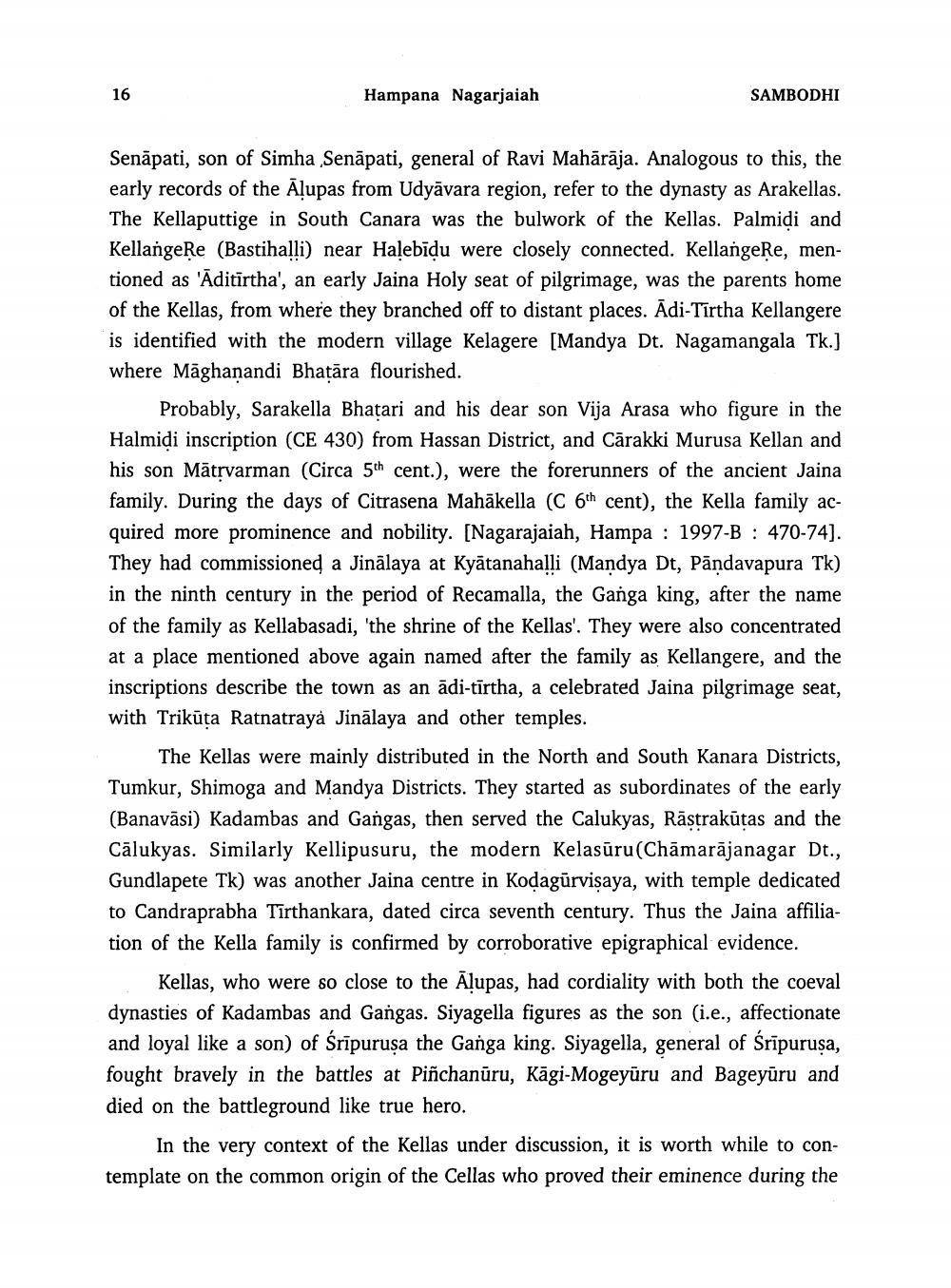________________
Hampana Nagarjaiah
SAMBODHI
Senāpati, son of Simha ,Senāpati, general of Ravi Mahārāja. Analogous to this, the early records of the Alupas from Udyāvara region, refer to the dynasty as Arakellas. The Kellaputtige in South Canara was the bulwork of the Kellas. Palmidi and KellangeĶe (Bastihalli) near Halebidu were closely connected. Kellangere, mentioned as 'Āditīrtha', an early Jaina Holy seat of pilgrimage, was the parents home of the Kellas, from where they branched off to distant places. Ādi-Tirtha Kellangere is identified with the modern village Kelagere [Mandya Dt. Nagamangala Tk.] where Māghanandi Bhatāra flourished.
Probably, Sarakella Bhatari and his dear son Vija Arasa who figure in the Halmidi inscription (CE 430) from Hassan District, and Cārakki Murusa Kellan and his son Mātrvarman (Circa 5th cent.), were the forerunners of the ancient Jaina family. During the days of Citrasena Mahākella (C6th cent), the Kella family acquired more prominence and nobility. [Nagarajaiah, Hampa : 1997-B : 470-74). They had commissioned a Jinālaya at Kyātanahalli (Mandya Dt, Pāndavapura Tk) in the ninth century in the period of Recamalla, the Ganga king, after the name of the family as Kellabasadi, 'the shrine of the Kellas'. They were also concentrated at a place mentioned above again named after the family as Kellangere, and the inscriptions describe the town as an ādi-tīrtha, a celebrated Jaina pilgrimage seat, with Trikūta Ratnatrayá Jinālaya and other temples.
The Kellas were mainly distributed in the North and South Kanara Districts, Tumkur, Shimoga and Mandya Districts. They started as subordinates of the early (Banavāsi) Kadambas and Gangas, then served the Calukyas, Rāstrakūtas and the Cālukyas. Similarly Kellipusuru, the modern Kelasūru(Chāmarājanagar Dt., Gundlapete Tk) was another Jaina centre in Kodagūrvisaya, with temple dedicated to Candraprabha Tirthankara, dated circa seventh century. Thus the Jaina affiliation of the Kella family is confirmed by corroborative epigraphical evidence.
Kellas, who were so close to the Alupas, had cordiality with both the coeval dynasties of Kadambas and Gangas. Siyagella figures as the son (i.e., affectionate and loyal like a son) of Srīpurusa the Ganga king. Siyagella, general of Śrīpurusa, fought bravely in the battles at Piñchanūru, Kāgi-Mogeyūru and Bageyūru and died on the battleground like true hero.
In the very context of the Kellas under discussion, it is worth while to contemplate on the common origin of the Cellas who proved their eminence during the




